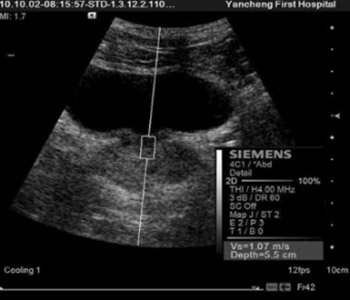A novel and simple approach to distinguish chronic prostatitis/ chronic pelvic pain syndrome IIIb from IIIa using virtual touch tissue quantification
DOI:
https://doi.org/10.17305/bjbms.2011.2546Keywords:
chronic prostatitis/chronic pelvic pain syndrome, virtual touch tissue quantification, shear wave velocityAbstract
Virtual touch tissue quantification (VTTQ) is a new, promising technique for detecting the stiffness of tissues. To evaluate the performance of VTTQ in discrimination between chronic prostatitis/chronic pelvic pain syndrome(CP/CPPS) IIIa and IIIb, VTTQ was performed in 147 patients with clinical definite CP/CPPS. The shear wave velocity (SWV) at inner gland and outer gland was quantified by implementing an acoustic radiation force impulse. The performance of different ratios of SWV at outer gland and inner gland in discrimination between CP/CPPS IIIa and IIIb was compared. CP/CPPS IIIb and IIIa was detected in 69 and 78 patients, respectively. The SWV values of outer gland in the patients with CP/CPPS IIIa were significantly greater than that of inner gland, while there were no significant difference between outer gland and inner gland in the patients with CP/CPPS IIIb. The area under the receiver operating characteristic curve for the ratio one (<1.5) of SWV at outer gland and inner gland to distinguish CP/CPPS IIIb from IIIa was 0.72, while it was 0.88 for the ratio two (<1.1). The diagnostic sensitivity, specificity and accuracy for CP/CPPS IIIb were 100%, 69.2%, 83.7%, respectively for the ratio one and 100%, 84.6%, 91.8%, respectively for the ratio two. These data suggested that CP/CPPS IIIa and IIIb have different SWV values in inner gland and outer gland, and VTTQ can effectively distinguish CP/CPPS IIIb from CP/CPPS IIIa using the ratio of SWV at outer gland and inner gland.
Citations
Downloads

Downloads
Additional Files
Published
Issue
Section
Categories
How to Cite
Accepted 2017-10-10
Published 2011-11-20









